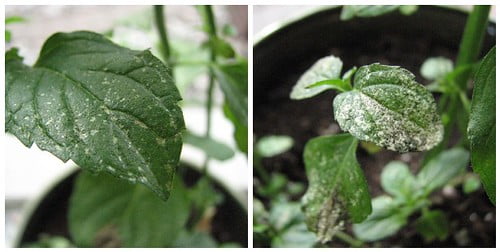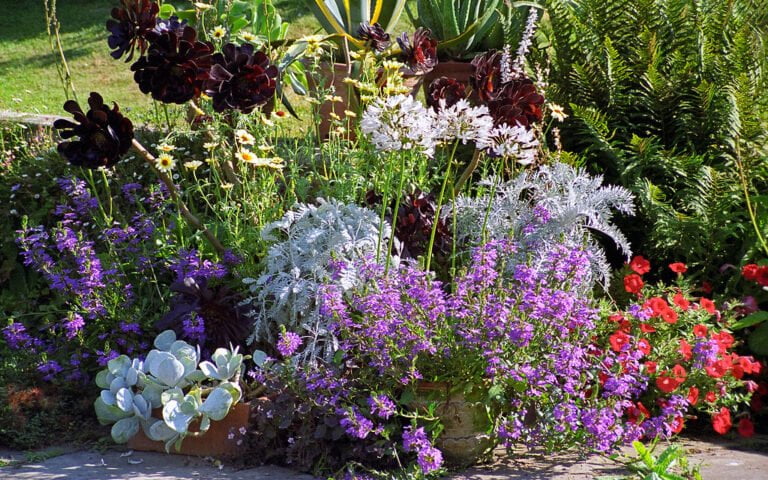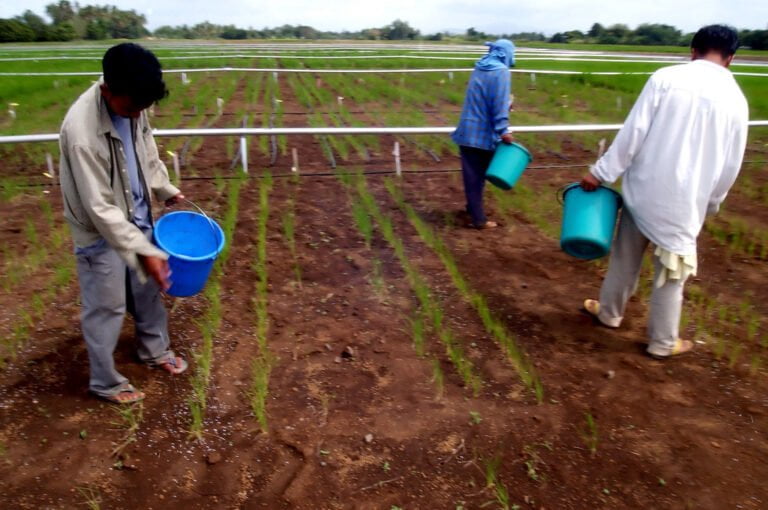Growing and Caring for San Marzano Tomato Plants
Are you ready to dive into the world of growing and caring for San Marzano tomato plants? With their rich flavor and versatile uses, these tomatoes are a must-have for any garden enthusiast. In this article, we'll guide you through the process, from choosing the right variety to harvesting and storing your delicious produce. Get your hands dirty, embrace the joy of gardening, and savor the satisfaction of serving your own homegrown San Marzano tomatoes. Let's get started!
Choosing the Right Tomato Variety
To choose the right tomato variety for your garden, consider the desired characteristics and qualities of the plant. You want a tomato that is flavorful, juicy, and versatile in its uses. One fantastic option to consider is the San Marzano tomato. These tomatoes are known for their rich, sweet flavor and low acidity, making them perfect for sauces, soups, and even fresh salads. They have a firm flesh and a thick skin, making them easy to peel and cook with. The San Marzano variety also boasts a high yield, so you'll have an abundance of delicious tomatoes to enjoy throughout the growing season. This variety is beloved by chefs and home cooks alike, so you can trust that you're choosing a tomato that will serve you well in the kitchen.
Preparing the Soil for Planting
Once you have chosen the right San Marzano tomato variety, it's time for you to prepare the soil for planting. This step is crucial in ensuring the success of your tomato plants. Start by clearing the area of any weeds or debris. Then, loosen the soil using a garden fork or tiller to a depth of about 12 inches. Next, amend the soil with well-rotted compost or aged manure to improve its fertility and drainage. Mix it well with the existing soil, making sure it is evenly distributed. It's also important to test the pH of the soil and adjust it if necessary. San Marzano tomatoes thrive in slightly acidic soil with a pH level between 6.0 and 6.8. By preparing the soil properly, you are setting the stage for healthy, productive tomato plants that will reward you with an abundance of delicious, flavorful fruit.
Starting San Marzano Tomato Seeds Indoors
To successfully start your San Marzano tomato seeds indoors, gather all the necessary supplies and carefully follow the steps outlined below. Starting your seeds indoors allows you to control the growing conditions and give your plants a head start before transplanting them outside. Here's what you'll need: high-quality seed starting mix, seed trays or pots, a spray bottle, and grow lights or a sunny windowsill. Begin by filling your seed trays or pots with the seed starting mix, moistening it slightly with water. Next, plant the seeds according to the package instructions, usually about 1/4 inch deep. Mist the soil with water using a spray bottle, ensuring it stays evenly moist. Place the trays or pots in a warm location with plenty of light, either under grow lights or on a sunny windowsill. Once your seeds germinate, provide them with 14-16 hours of light per day. Keep the soil consistently moist but not waterlogged. After a few weeks, your seedlings will be ready to be transplanted outdoors. By starting your San Marzano tomato seeds indoors, you're giving them the best possible chance to thrive and provide you with an abundant harvest.
Transplanting Seedlings Into the Garden
After successfully starting your San Marzano tomato seeds indoors, it's time to transplant the seedlings into your garden. This is an exciting step in your journey towards growing delicious tomatoes! Transplanting seedlings is crucial for their healthy growth and development. Before transplanting, make sure to choose a sunny spot in your garden with well-drained soil. Gently remove the seedlings from their pots, being careful not to damage the roots. Dig a hole slightly larger than the root ball and place the seedling into the hole, ensuring the soil covers the roots completely. Gently firm the soil around the seedling and water it thoroughly. Remember to provide support for the young plants as they grow taller. With proper care and attention, your San Marzano tomato plants will thrive and reward you with bountiful harvests.
Providing Proper Watering Techniques
Now that you've successfully transplanted your San Marzano tomato seedlings into your garden, it's crucial to pay attention to providing proper watering techniques to ensure their healthy growth and development. Water is essential for these plants, as it helps transport nutrients and minerals throughout their system, enabling them to thrive and produce delicious tomatoes. When watering your San Marzano tomatoes, aim for deep, thorough watering rather than frequent shallow watering. This encourages the roots to grow deeper, making the plant more resilient to drought conditions. It's important to water the roots directly and avoid wetting the leaves to prevent the development of diseases. Additionally, ensure that the soil is well-drained to prevent waterlogging, which may lead to root rot. By employing these watering techniques, you'll be nurturing your San Marzano tomato plants and setting them up for a bountiful harvest.
Fertilizing San Marzano Tomato Plants
Once your San Marzano tomato plants are properly watered, it's time to focus on fertilizing them for optimal growth and yield. Fertilizing your plants will provide them with the essential nutrients they need to thrive. Choose a balanced fertilizer with a ratio of nitrogen, phosphorus, and potassium, such as a 10-10-10 or 14-14-14. Apply the fertilizer according to the package instructions, usually every two to three weeks. Be sure to water your plants thoroughly before applying the fertilizer to prevent burning the roots. Additionally, consider using organic fertilizers, such as compost or fish emulsion, to provide a natural source of nutrients. Regular fertilization will promote healthy foliage, strong root development, and abundant fruit production. Your San Marzano tomato plants will thank you with a bountiful harvest of delicious tomatoes.
Protecting Against Common Pests and Diseases
To protect your San Marzano tomato plants from common pests and diseases, take proactive measures to ensure their health and productivity. Pests like aphids, whiteflies, and tomato hornworms can wreak havoc on your plants, while diseases such as blight and powdery mildew can quickly spread and destroy your crop. Start by inspecting your plants regularly and removing any pests by hand. Introduce beneficial insects like ladybugs and lacewings to control pest populations naturally. Additionally, practice proper sanitation by cleaning up fallen leaves and debris, as these can harbor disease-causing pathogens. Consider using organic insecticides and fungicides as a last resort. Remember to follow the instructions carefully and avoid spraying during hot and sunny periods. By diligently protecting your San Marzano tomato plants, you can enjoy a bountiful harvest of delicious and healthy tomatoes.
Supporting Tomato Plants With Stakes or Cages
To provide structural support and prevent sprawling, you can stake or cage your San Marzano tomato plants. This is an essential step in ensuring the health and productivity of your plants. Staking involves driving a wooden or metal stake into the ground beside each tomato plant and tying the main stem to the stake as it grows. This method helps to keep the plant upright and prevents it from bending or breaking under the weight of the fruits. Alternatively, you can use cages made of wire or sturdy plastic. Cages provide a more convenient and efficient way to support your plants, as they allow the tomato vines to grow through the openings while providing ample support. Whichever method you choose, remember to secure the plants gently to avoid damaging the stems. Supporting your San Marzano tomato plants with stakes or cages will not only keep them upright but also ensure proper air circulation, reduce the risk of diseases, and make harvesting easier.
Pruning and Training Tomato Plants
To maintain the health and productivity of your San Marzano tomato plants, it is important to prune and train them. Pruning involves removing the suckers, which are the small shoots that grow in the leaf axils of the plant. By removing these suckers, you allow more energy to be directed towards the growth of the main stem and fruit production. Training your tomato plants involves tying them to stakes or cages to provide support and prevent sprawling. This helps to keep the plants upright, allows for better air circulation, and reduces the risk of diseases. When training, gently tie the main stem to the stake or cage using soft string or plant ties, ensuring not to constrict or damage the stem. By pruning and training your San Marzano tomato plants, you are setting them up for success and ensuring a bountiful harvest.
Harvesting and Storing San Marzano Tomatoes
Continue caring for your San Marzano tomato plants by learning how to properly harvest and store the delicious fruits. Harvesting at the right time ensures that you enjoy the full flavor and juiciness of these prized tomatoes. When the fruits are fully ripe, gently twist them off the vine, being careful not to damage the plant. To store your harvested San Marzano tomatoes, it is best to keep them at room temperature until they are fully ripe. Once ripe, place them in a cool, dark place like a pantry or cellar. If you have an excess of tomatoes, consider canning or freezing them to enjoy their flavor all year round. Remember, proper harvesting and storage techniques will ensure that your San Marzano tomatoes serve you well in all your culinary creations.
Conclusion
In conclusion, growing and caring for San Marzano tomato plants can be a rewarding and delicious experience. By choosing the right variety, preparing the soil, starting seeds indoors, transplanting seedlings, providing proper watering techniques, protecting against pests and diseases, supporting plants with stakes or cages, and pruning and training them, you can ensure a bountiful harvest of these flavorful tomatoes. With a little love and attention, your San Marzano plants will thrive and provide you with the perfect ingredients for your culinary creations.






